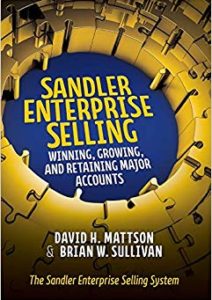Summertime……warm breezes and cool beverages. Living is easy, right? For those of us in sales, not so much. As we speed towards the midpoint in our selling year, we assess our 2024 performance and unless we are among the lucky ones who have nailed big Q1 or Q2 deals, we see that much work remains to be done to position ourselves for a strong year. Not that we can’t enjoy some of our summer but as we all know, in sales there’s no rest for the weary. Where do we start to build on a year that has likely been filled with many positives and negatives thus far? How do we accelerate our improvement to close strong in planning to hit the year-end numbers?
Think back – way back to December and January and that SWOT analysis you led with your team – the time-worn process that assesses those four categories:
Strengths: The internal characteristics, providing you a clear advantage.
Weaknesses: The internal attributes placing you at a disadvantage and limiting your team’s ability to achieve goals.
Opportunities: The positive external factors that increase your chances of success.
Threats: The negative external factors jeopardizing your success and increasing your vulnerability.
Ah, yes…….memories. But how do pick up from what was then a promising SWOT analysis to help increase your chances of 2024 success? Maybe you’re fortunate to be part of a forward-thinking organization that integrated those SWOT findings into practical 2024 operational plans to increase your chances of being at 150% of plan at this point in the year. Likely, though, that’s not the case. If your sales organization is like most, those SWOT results were summarily set aside by a team focused on breaking out of the January selling gate fast. The SWOT flip charts filled with great ideas were likely rolled up and are now collecting dust in the copier room.
With H2 staring at us on the calendar, there’s still time. Time to maximize your strengths, shore up your weaknesses, take advantage of your opportunities and defend against your threats. By revisiting SWOT, yes, but also by taking it to a more actionable level.
With your December and January SWOT findings as the baseline, refresh them with your recent history lessons from H1. You can’t get a reset on them, but they can deliver a ton of practical knowledge. Recent experience is invaluable. Of course, you’ll identify some new SWOT items to consider that you didn’t predict earlier, but your initial findings will save you lots of time. And candidly speaking, if you never actually conducted that SWOT session, now is the time. Not only though, through traditional SWOT and its planning focus. With half the year gone, that’s not enough. You need forward motion to bring SWOT to life with concrete actions to drive real acceleration. To insure a meaningful impact on your H2 numbers, you must act now.
It’s a simple concept, really, like most of selling’s best practices. Accelerating traditional SWOT is light on theory and heavy on action. We start by improving on the previous output and then we create defined actions for each identified SWOT item, where each item is enhanced through these four critical areas:
1. Action: The principal action to drive improvement.
The outline of a plan, a template, or other type of initial progress, dictating real movement, strategy and action.
2. Impact: The effect of the achievement of the results of the action.
Team discussion and consensus determine the expected impact – high, medium or low, in the context of your business model.
3. Accountability: The person accountable for making the action happen.
Several individuals play roles in driving actions, but it’s vital to identify one specifically accountable person. I strongly suggest using use the popular RACI system to illustrate the clear responsibilities of each person engaged:
R = Responsible – The people who perform the work to get the job done.
A = Accountable – The one person specifically and ultimately accountable.
C = Consulted – The people whose counsel is sought and with whom two-way communication flows.
I = Informed – Those simply kept informed of status and progress. While their input is always welcome, it’s not required.
4. Date: The date by which the action is to be completed.
The realistic date the action will be implemented.
With this process completed for all identified strengths, weaknesses, opportunities and threats, the actions are listed by impact level and date, generating a prioritized schedule for attacking the most productive actions first, maximizing improvement in the remaining time. Now that’s a plan for H2!
And this process of raising SWOT to impactful and actionable levels delivers value in other types of initiatives as well. Truthfully, it’s hard to find situations where it doesn’t. But this golden opportunity in timing to accelerate H2 sales provides a powerful path to real improvement that benefits the entire organization. Remember, there’s still time.











Comments